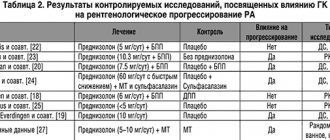Cytostatics, from the Greek “making the cell immobile,” have been used in oncology since 1947. These drugs disrupt the life of the cell, forcing it to commit suicide - apoptosis. Cytostatics are used not only to treat malignant processes, but also rheumatic and autoimmune diseases.
- What are cytostatics?
- Classification of cytostatics
- How do cytostatics work?
- Scope of application of cytostatics
- Indications and contraindications for the use of cytostatics
- Side effects of cytostatics
- Mechanism of action of cytostatics
- What cytostatics are most often prescribed?
What are cytostatics?
Chemotherapy is exclusively the use of cytostatics. In addition to chemotherapy, antitumor treatment includes endocrine effects using hormonal drugs, targeted therapy that “turns off” a certain biochemical reaction, and the use of biological - immuno-oncological agents, which themselves do not act on the malignant cell, but activate immune defenders.
Cytostatics damage all rapidly dividing cells - any malignant and normal cells in the blood, bone marrow and gonads. Over time, cell clones develop resistance to cytostatics, reducing the effectiveness of chemotherapy.
Classification of cytostatics
All cytostatic drugs are divided into 4 large groups according to their mechanism of action or origin:
- alkylating cytostatics , which entangle DNA strands by forming unscheduled bonds with them;
- antimetabolites are very similar in appearance to human protein substances involved in cellular activity, but unlike natural ones, their interference leads to cell death;
- antitumor antibiotics are of the same chemical origin as the antibacterial drugs that we use to fight inflammation and infections, but they do not affect the bacterial flora, but they kill cancer cells;
- cytostatics of plant origin have similar mechanisms of damage to cellular structures, but the main unifying principle is their initial production from plant materials; now most are synthesized in the laboratory.
Hormones have nothing to do with cytostatics, since their effect is to antagonize natural sex hormones or to directly or indirectly block their production. A lack of hormones or their replacement with an antihormone also leads to cell death.
pharmachologic effect
Immunosuppressant drugs suppress the immune system by suppressing the growth and development of immune cells - T-lymphocytes and B-lymphocytes, as well as reducing the formation of antibodies.
The immunosuppressive and anti-inflammatory effects of immunosuppressive drugs are also realized through the suppression of specific signaling molecules responsible for the “communication” of immune cells - cytokines: interleukins (interleukin-1, interleukin-4, interleukin-6), tumor necrosis factor-alpha.
Glucocorticoids also have pronounced antiallergic and anti-inflammatory effects, increase blood pressure (anti-shock effect), and stimulate the neutralizing function of the liver (antitoxic effect).
Immunosuppressants of the cytostatic group, glucocorticoids, and calcineurin inhibitors significantly inhibit the growth and development of cancer cells, providing an additional antitumor effect.
How do cytostatics work?
Ultimately, all methods of cytostatic effects lead to the same thing - cell apoptosis. Apoptosis is a natural stage of cellular life, in contrast to death due to inflammation, infection, and necrosis. This is programmed death, each cell comes to it in its own time, and cytostatics lead to it outside the program. Every day in the human body, 100 billion cells undergo apoptosis; we can assume that every two years the cellular composition of the body is completely renewed. In a simplified form, apoptosis is represented as follows:
- formation of a biochemical signal to trigger death, a kind of cellular awareness of the need to die;
- production of intracellular enzymes that burn cellular “insides”;
- absorption of the dead body by neighboring cells and macrophages;
- decomposition by intracellular lysosomes of what is eaten into microelements for further use.
The process proceeds according to the principle “there was and there is no”, which is why during chemotherapy there is no inflammation or scars at the site of the tumor, but almost normal tissue, as if there was no disease.
Scope of application of cytostatics
Cytostatics are used for all malignant tumors, not excluding diseases of the blood and lymphatic tissue, tumors of the brain and gonads. Cyclophosphamide and antimetabolites in disproportionately lower doses than in oncology are used in rheumatology.
Each cytostatic drug has its own spectrum of antitumor activity, for example, doxorubicin and fluorouracil work great for breast cancer, but are ineffective for small cell lung cancer. Chemotherapy for intestinal carcinomas is not possible without fluorouracil, and doxorubicin is useless for them.
Indications and contraindications for the use of cytostatics
Antitumor drugs are used only with morphological confirmation of the diagnosis. Processes are not recognized as malignant if the morphological (histological) conclusion indicates “suspiciously for...”, there must be an accurate and 100% answer. If suspected, additional research is necessary - a repeat biopsy, IHC and even genetic research.
A global contraindication is predicted intolerance to chemotherapy in the presence of severe concomitant diseases or a serious condition caused by a malignant disease. When “the game is not worth the candle” and drug intervention threatens serious complications and death.
You cannot use drugs if they are known to be ineffective - outside the spectrum of activity.
Temporary contraindication: inflammatory and infectious diseases, residual complications after the previous course of treatment.
Today, the choice of antitumor drugs is so wide that it is not difficult to choose the optimal drug or even combination. However, if at least two lines of therapy are ineffective and the condition is progressively worsening, a third chemotherapy option is not always advisable.
Modern approaches to the treatment of rheumatoid arthritis (RA) focus the rheumatologist on achieving remission of the disease or a minimal degree of activity in long-term ill patients [1–3]. The tool to achieve this goal is standard and biological disease-modifying anti-inflammatory drugs (DMARDs). The recommendations of the European League Against Rheumatism (EULAR) and the National Recommendations of the Association of Rheumatologists of Russia (ARR) name methotrexate (MTX) as the first-line drug for treatment of RA, and if there are restrictions on its use, other standard DMARDs are used [4–6]. If RA activity remains active, the rheumatologist should switch to second-line therapy – genetically engineered biological drugs (GEBPs) [4, 6]. When updating recommendations for the treatment of RA in 2021, EULAR experts indicated the Janus kinase 3 blocker, tofacitinib, as a second-line targeted therapy along with biologically active drugs. Currently, studies are ongoing with other Janus kinase blocker molecules [7, 8].
In real clinical practice, the widespread use of second-line drugs while maintaining RA activity is limited by their high cost. In the Republic of Karelia, 90% of RA patients receive MTX as the main basic drug, however, errors are still observed when prescribing this classic drug by rheumatologists in clinics. Thus, often the starting dose of MT is low even with initially high RA activity. This approach, unfortunately, does not allow full use of the capabilities of basic monotherapy with MTX, demonstrated in a large number of studies [9–11]. Subsequently, the increase in the dose of MT is often carried out at an inappropriate pace or the rheumatologist stops at an insufficient dose. Unfortunately, at present, in our conditions, it is not possible to transfer all patients who poorly tolerate oral forms of MTX and/or receiving a dose of 15 mg/week to a subcutaneous form of the drug. In addition, the rheumatologist must remember that even in the conditions of providing biological therapy to patients who do not respond to MTX monotherapy, basic MTX therapy should continue [10, 11].
In the rheumatology department of the Republican Hospital named after. V.A. Baranov" for patients with RA activity that persists despite standard DMARD therapy, the issue of switching to second-line therapy is being decided. In our patients with rheumatic diseases, incl. with RA, there are two opportunities to receive targeted therapy: as part of high-tech medical care at the rheumatology department of the Republican Hospital or when included in randomized clinical trials (RCTs) at its research center. Thus, several of our patients with persistent RA activity despite MTX therapy took part in RCTs of tofacitinib conducted by Pfizer. The last years of this research were an open phase, i.e. all included patients received tofacitinib therapy until April 2021. Upon completion of the RCT, patients returned to MTX monotherapy, but remission was not maintained in all cases. When trying to change the basic therapy, several patients failed to increase the dose of MT and reduce the activity of RA due to the development of toxic effects of the drug. The choice of further tactics for managing these patients is presented in the form of clinical examples.
Patient N, born in 1968. has been suffering from seropositive RA since 1998, at the onset of the disease she received low-dose MTX and allowed breaks in treatment. Continuous MT therapy since June 2003 at a dose of 10 mg/week; since September 2006, the dose has been increased to 15 mg/week. Short courses of glucocorticoid therapy (GCT) were repeatedly prescribed to suppress activity, but the steady progression of RA led to the formation of radiographic stage IV. Due to the continued activity of RA, the patient was included in a post-marketing study of tocilizumab and received 6 infusions of the drug, achieving remission. Subsequently, a progressive increase in RA activity was again noted against the background of MTX monotherapy with the development of anemia of chronic inflammation. The patient was included in an RCT of tofacitinib and received the drug in the open phase for 17 months, but was prematurely withdrawn from the protocol due to the development of an adverse event – facial streptoderma. After resolution of the severe skin infection, the basic therapy for RA was changed to leflunomide 20 mg/day; after 2 months, high disease activity was detected: number of painful joints (NJ) – 26, number of swollen joints (SJ) – 18, ESR – 46 mm/h, C -reactive protein (CRP) – 19.3 mg/l, DAS28 activity index for ESR – 6.4. A decision was made to start therapy with tocilizumab at a dose of 8 mg/kg intravenously once every 4 weeks, taking into account the previous successful use of this biological therapy, as well as the presence of chronic inflammation in the anemic patient and basic therapy with leflunomide rather than MTX. RA remission was achieved by the third infusion of tocilizumab: NBS – 2, NPV – 1, ESR – 5 mm/h, CRP – 0.5 mg/l, DAS28 – 1.58, and remains to this day.
Patient M. born 1977 has been suffering from seropositive RA since September 2009, basic therapy with MT was started from the moment the disease was diagnosed at a dose of 10 mg/week in combination with bridge GCT, since July 2010 the dose of MT was increased to 15 mg/week, and since January 2011. – up to 20 mg/week due to continued RA activity. The patient was included in an RCT of tofacitinib and received the drug in the open phase for 27 months; we removed it from the protocol due to loss of efficacy. After 3 months, against the background of MTX monotherapy at a dose of 20 mg/week, anemia of chronic inflammation and high RA activity are observed: BHR – 35, NPV – 26, ESR – 83 mm/h, CRP – 76.6 mg/l, DAS28 – 6, 22, and therefore therapy with etanercept 50 mg/week subcutaneously was initiated. A gradual decrease in RA activity was noted by the 3rd month of therapy: BHR – 12, NPP – 10, ESR – 44 mm/h, CRP – 2.5 mg/l, DAS28 – 3.99. To date, the patient has been receiving therapy with MTX and etanercept for 9 months, achieving significant improvement, but not remission of RA: BRS – 10, NPV – 3, ESR – 35 mm/h, CRP – 1.3 mg/l, DAS28 – 3 ,18.
Patient Ya. born 1975 has been suffering from seropositive RA since June 2003; since the diagnosis of the disease, basic therapy has not been prescribed at the patient’s request due to pregnancy planning. Basic MT therapy was started in October 2004 at a dose of 10 mg/week; since February 2005, the MT dose was increased to 17.5 mg/week. Over the course of 1.5 years of illness, radiographic progression of RA from stage I to stage III was noted with continued disease activity. In June 2006, due to the continued activity of RA, she was transferred to combination therapy with standard DMARDs: MTX 10 mg/week + leflunomide 20 mg/day. Subsequently, the dose of MT in combination was increased to 12.5 mg/week, short courses of GCT were repeatedly prescribed to suppress activity, but remission of the disease was not achieved. The patient was included in an RCT of tofacitinib after leflunomide washout, according to the protocol, and received the study drug in the open phase for 39 months with RA remission achieved. At the end of the study, combination basic therapy with MTX and leflunomide was resumed. After 4 months, due to an increase in activity, therapy with infliximab was initiated at a dose of 3 mg/kg intravenously at weeks 0, 2, 6, then every 8 weeks. At the time of initiation of GIBP therapy: BHR – 28, NPP – 23, ESR – 37 mm/h, CRP – 41.1 mg/l, DAS28 – 7.02. In this patient, during therapy with infliximab, a gradual improvement was noted and by the fifth infusion the indicators were: CHB - 10, NPP - 9, ESR - 9 mm/h, CRP - 9.7 mg/l, DAS28 - 3.12. However, complete remission of RA has not been achieved.
Patient T. born 1966 has been suffering from seropositive RA since September 2001, basic therapy with MTX was immediately started at a dose of 10 mg/week, but during the first years of the disease the patient skipped MTX due to poor tolerance. Continuous therapy with MTX at a dose of 15 mg/week - since 2003, a year later the dose was increased to 20 mg/week, and since September 2006, sulfasalazine 2 g/day was added to MTX; GCT was repeatedly prescribed in short courses to control activity. By 2006, radiographic stage IV of RA was established. Due to persistently high disease activity against the background of combined standard basic therapy, the patient was included in an RCT of tofacitinib after sulfasalazine washout, according to the protocol, and received the study drug for 42 months. During the study, significant positive dynamics were achieved, but despite maintaining remission most of the time, clearly defined exacerbations of RA occurred. Upon completion of the study, combined standard basic therapy was resumed, but within a month an increase in RA activity was noted. After 2 months, the following were revealed: ChBS – 23, NPP – 17, ESR – 79 mm/h, CRP – 27.3 mg/l, DAS28 – 6.72, and therefore therapy with infliximab was started at a dose of 3 mg/kg intravenously. 0th, 2nd, 6th week, then every 8 weeks. Unfortunately, therapy with an anti-TNF agent was not successful in this patient. During the fifth infusion of infliximab, it was stated: NBS – 24, NPV – 14, ESR – 60 mm/h, CRP – 11.6 mg/l, DAS28 – 5.12, i.e. Only a halving of CRP levels was achieved, so anti-TNF therapy was discontinued. When moving to the next line of therapy in such a clinical case, it is advisable to choose a GEBD with a different mechanism of action, so the patient was started on abatacept therapy at a dose of 125 mg/week subcutaneously. When initiating therapy with a lymphocyte co-stimulation blocker, RA activity indicators were as follows: BHR – 26, NPV – 18, ESR – 115 mm/h, CRP – 18.8 mg/l, DAS28 – 8.07. Currently, there is only one follow-up point for this patient - 1 month. Of course, after such a short period of time it is inappropriate to try to assess the dynamics of RA activity, however, it should be emphasized that subjectively the patient has already noted an improvement in well-being. Here are the activity indicators after a month of abatacept therapy: ChBS – 12, NPP – 8, ESR – 78 mm/h, CRP – 14.3 mg/l, DAS28 – 6.2.
Thus, with the given clinical examples, we wanted to draw the attention of rheumatologists to the difficulties of managing patients with persistently high activity of RA against the background of standard basic therapy. In real clinical practice in the Republic of Karelia, the situation was complicated by the fact that we could not promptly intensify the treatment of the presented patients, but when the opportunity arose, we included them in RCTs with tofacitinib. Upon completion of each patient’s participation in the study, we understood the need to intensify standard basic therapy, but did not have the opportunity to prescribe a GEBD immediately. An increase in RA activity after cessation of tofacitinib therapy was noted in the presented patients at different times, which may be associated with the duration of RA, and with the characteristics of previously administered basic therapy, as well as with the response to MT before and after tofacitinib therapy and the very effect of long-term therapy with the blocker Janus kinases. It should be noted that among our patients, therapy with tocilizumab after therapy with tofacitinib was more effective than anti-TNF agents, despite the small number of observations.
Side effects of cytostatics
Toxic reactions are caused by damage to normal tissues, which are usually very sensitive to cytostatics:
- blood cells, which is clinically manifested by changes in tests, most often leukopenia and neutropenia, thrombocytopenia and much less often - anemia;
- bone marrow gradually slows down the rate of restoration of hematopoietic sprouts, active tissue is replaced by connective and fatty tissue, and in blood tests the level of all formed elements decreases;
- mucous membranes react with necrosis with rejection, which is manifested by stomatitis, colitis, enteritis, pneumonitis and inflammation of the venous endothelium;
- the gonads respond by disrupting spermatogenesis and stopping menstruation;
- skin appendages - hair falls out, nails become coarser and change their structure.
The drug may have not only general, but also individual toxic manifestations, in which nerve cells or renal tubules, hepatocytes or muscle fibers of the heart selectively die. Sensitivity to drugs is very individual, and the spectrum and severity of adverse reactions also vary.
Mechanism of action of cytostatics
Two driving mechanisms:
- changes in the structure of DNA, including abnormal twisting that prevents the strands from diverging during division, as well as repair disorders - restoring the continuity of the strand when damaged;
- cell division disorder is a disorder in the formation of the cell spindle, which separates chromosomes into daughter cells, typical of herbal preparations.
Not only each group, but also each cytostatic has its own mechanism of antitumor action, or rather, several mechanisms of damage, most of which are unknown.
The place of genetically engineered biological and targeted drugs in the treatment of rheumatoid arthritis
The main etiological and pathogenetic factors of rheumatoid arthritis, as well as the main groups of drugs for its treatment are presented. In particular, the issues of prescribing basic anti-inflammatory drugs and the tactics of using genetically engineered biological and targeted drugs when the effects of the former are insufficient are considered. Particular attention is paid to the strategy for selecting genetically engineered biological and targeted drugs, taking into account the risk of complications during such treatment. In addition, the main indicators of the effectiveness of the therapy were analyzed.
Table 1. ACR/EULAR classification criteria for rheumatoid arthritis
Table 2. Characteristics of TNF-alpha inhibitors
Rice. 1. Dynamics of RA activity according to DAS 28-CRP in patients receiving infliximab, adalimumab, etanercept, certolizumab pegol and golimumab for 102 weeks
Rice. 2. Patient A. 46 years old before and after treatment
Rice. 3. Dynamics of RA activity according to DAS 28-CRP and quality of life according to HAQ-DI during treatment with abatacept for two years
Rice. 4. Dynamics of laboratory parameters during abatacept therapy during 24 weeks of observation
Rice. 5. Dynamics of RA activity according to DAS 28-CRP during tocilizumab therapy
Rice. 6. Dynamics of RA activity according to DAS 28-CRP and quality of life according to HAQ during rituximab therapy during 12 months of observation
Table 3. Dynamics of main indicators of RA activity and functional status during treatment with tofacitinib
Table 4. Adverse reactions identified during observation of patients receiving GIBT at the GIBT Center of North-Western State Medical University named after. I.I. Mechnikov
Table 5. Pregnancy outcomes in patients with RA during therapy with TNF-alpha inhibitors
Introduction
Rheumatoid arthritis (RA) is characterized by erosive symmetrical polyarthritis, as well as damage to various organs and systems. This is the most common immunoinflammatory joint disease. Thus, the prevalence of RA among the adult population is 0.5–1.0%, the ratio of women to men is 3–4:1.
The peak incidence occurs between 40–55 years.
Almost 50% of patients become disabled in the first five years from the onset of the disease [1]. In addition, such patients have an increased risk of developing cardiovascular diseases, respiratory diseases, malignancies, infections, depression and/or anxiety [2].
The etiology of RA has not been fully established. However, it is known that the pathogenesis is based on defects in T- and B-cell immune responses, leading to overproduction of proinflammatory cytokines (in particular, tumor necrosis factor (TNF) alpha, interleukins (IL) 6, 1, 17, 12 and 23) and the formation of rheumatoid factors (RF), antibodies to cyclic citrullinated peptide (ACCP), etc., inducing inflammation, joint destruction, the formation of rheumatoid pannus and damage to many visceral organs [3–7].
To verify the diagnosis, the classification criteria for rheumatoid arthritis of the American College of Rheumatology (ACR) and the European League Against Rheumatism (EULAR) 2010 are used (Table 1) [8]. The diagnosis is considered reliable with a score of six or more.
According to EULAR expert recommendations [9–11], patients with established RA should be immediately prescribed disease-modifying anti-inflammatory drugs (DMARDs). These include methotrexate, leflunomide, etc. Methotrexate is recognized as the gold standard of therapy. In the absence of contraindications, it is a first-line drug [12, 13].
However, while using DMARDs, more than half of patients fail to maintain control over the disease and the development of life-threatening complications. This became the basis for including genetically engineered biological drugs (GEBPs) that block the activity of proinflammatory cytokines and pathological activation of T- and B-lymphocytes in the complex therapy of RA [14].
It should be noted that GEBDs, along with DMARDs, have become the basis of the new EULAR concept - “treat to target”. The use of these drugs made it possible to achieve not only remission or a significant decrease in RA activity, but also a long-term relapse-free course. The indication for the prescription of a biologically active drug is the persistence of medium and high activity of the immunoinflammatory process for six months, despite the use of DMARDs [10, 11].
Currently, depending on the mechanism of action, several groups of monoclonal antibodies (mAbs) are distinguished [15]:
- TNF-alpha inhibitors (infliximab, etanercept, adalimumab, certolizumab pegol, golimumab);
- IL-6 receptor inhibitors (tocilizumab);
- anti-B cell drugs (rituximab);
- T-lymphocyte costimulation blockers (abatacept).
It is important to emphasize that in recent years the production of biosimilars that are structurally similar to the original biosimilars has been rapidly developing. However, before these drugs are introduced into the pharmaceutical market, their effectiveness and safety must be assessed in multicenter controlled clinical trials.
A new drug in targeted therapy for RA is tofacitinib, a blocker of cytokine signaling pathways through the Janus kinase system [16].
Tumor necrosis factor alpha inhibitors
As noted earlier, TNF-alpha, a pleiotropic cytokine with pro-inflammatory and immunomodulatory activity, plays an important role in the pathogenesis of RA [17]. TNF-alpha inhibitors are divided into three groups:
- monoclonal antibodies (infliximab, adalimumab, golimumab);
- pegylated Fab'-fragment of mAb (certolizumab pegol);
- modified TNF receptor (etanercept).
Their characteristics are presented in table. 2 [14].
Among the biologically active drugs, TNF-alpha inhibitors are first-line drugs in patients with RA. In the vast majority of cases, they are prescribed in combination with methotrexate if the latter is insufficiently effective, less often - as monotherapy if there are contraindications to methotrexate [14, 18–20]. In this case we are talking about drugs such as adalimumab, etanercept, certolizumab pegol.
The effectiveness of treatment is usually assessed within 12 weeks. The effect of therapy has been proven by the results of many clinical studies, including data from our own registry of RA patients.
Adalimumab is a disease-modifying drug. Its advantages include rapid development (on average on the fourth or fifth day) and long-term persistence (six months or more) of the effect in most patients, a good safety profile and ease of administration [21]. The main indication for adalimumab in RA is previous ineffectiveness or intolerance to DMARDs, in particular methotrexate. It was found that the effectiveness of adalimumab is significantly higher with a short duration of the disease (up to three years) and initially higher rates of disease activity (Disease Assessment Score 28 - C-reactive protein - DAS 28-CRP). Moreover, the rate of development and severity of the effect do not depend on the age of the patients, the radiological stage of RA and seropositivity.
According to the results of the PREMIER study, the combined use of adalimumab and methotrexate was superior to adalimumab monotherapy according to ACR, DAS 28.
There have been no direct comparative randomized controlled clinical studies of the efficacy and safety of TNF-alpha inhibitors. Data from meta-analyses allow us to conclude that their effectiveness is comparable when added to methotrexate – achieving an ACR response of 20 and 50 [15]. This conclusion is confirmed by the results of our own studies of the effectiveness and safety of infliximab, adalimumab, etanercept, certolizumab pegol, golimumab in the treatment of patients with RA for 102 weeks (Fig. 1).
X-ray monitoring revealed that in 42% of patients receiving combined treatment with methotrexate and TNF-alpha inhibitors, the rate of the erosive process decreased. In some cases, a decrease in the size and number of erosions was also noted (Fig. 2).
Typical undesirable side effects of TNF-alpha inhibitors are increased susceptibility to infections, including reactivation of tuberculosis, histoplasmosis and hepatitis B, as well as the development of demyelinating diseases, lupus-like syndrome, malignancies, thromboembolism and hypersensitivity reactions [18]. It should be emphasized that against the background of such therapy, latent tuberculosis often occurs atypically (miliary tuberculosis, extrapulmonary manifestations). In this regard, in patients with RA, both at the beginning and during therapy with biologically active drugs, screening is required - the quantiferon test, the Diaskin test, the T-Spot test, and computed tomography of the chest organs. Treatment with TNF-alpha inhibitors in carriers of hepatitis C and B virus should be carried out with caution and under the control of laboratory parameters due to the risk of exacerbation of diseases.
When treating with genetically engineered biological drugs, neutralizing antibodies are often formed, which leads to a decrease in its effectiveness. Antibodies to TNF inhibitors containing both human and murine proteins are more often formed. This significantly increases their immunogenicity. The frequency of detection of neutralizing antibodies to TNF inhibitors ranges from 7 to 53% depending on the dose taken [22, 23]. According to our registry data, in four patients receiving methotrexate in combination with TNF inhibitors, after six months of treatment, in addition to a decrease in the effectiveness of the therapy, neutralizing antibodies were detected in a titer of 125.8 ± 10.7. At the same time, an analysis of the literature shows that when treating RA with etanercept or adalimumab, neutralizing antibodies are detected less frequently - in 5–17% of cases. It has been established that in case of interruption of treatment with biologically active drugs, the formation of antibodies can increase two to three times [20].
T-lymphocyte costimulation blocker
Abatacept, which is a hybrid protein molecule consisting of a human extracellular CT4 domain associated with a modified Fc (CH2 and CH3 regions) fragment of immunoglobulin (Ig) G1, is less immunogenic than TNF-alpha inhibitors [24]. The drug inhibits the activation of T lymphocytes and, therefore, reduces proliferation, as well as the production of pro-inflammatory cytokines (tumor necrosis factor alpha, interleukin 6 and interferon gamma). Abatacept is used for the treatment of RA, both in combination with methotrexate or other basic drugs, and as monotherapy. According to international multicenter studies, in particular ATTAIN and ATTEST, abatacept is comparable in effectiveness and safety to TNF-alpha inhibitors. In RA, it can be used both as a first-line drug and as a second-line drug when TNF-alpha inhibitors are ineffective [24]. In addition, according to randomized clinical trials, abatacept does not increase the risk of tuberculosis and malignancy.
In our cohort, 36 RA patients receive abatacept, 30 of whom take it in combination with methotrexate, six as monotherapy due to intolerance to DMARDs. By the 24th week of treatment, patients achieved low disease activity, laboratory parameters decreased - RF, ACCP, erythrocyte sedimentation rate (ESR), C-reactive protein (CRP). There was also an improvement in quality of life, according to the Health Assessment Questionare Disability Index (HAQ-DI). The positive dynamics persisted during 12 months of observation. No serious adverse events were noted in this group of patients (Figs. 3 and 4).
Interleukin 6 receptor inhibitors
Monoclonal antibodies to IL-6, which have a whole range of pro-inflammatory effects, are widely used in the treatment of RA. Drugs in this group include tocilizumab.
Tocilizumab is a humanized mAb (IgG1), the action of which is directed at membrane and soluble IL-6 receptors [25].
Tocilizumab is the drug of choice in patients with severe polyarticular disease and significant systemic manifestations of RA [26, 27]. However, when prescribing such treatment, careful monitoring of lipid profiles is necessary [25].
For RA, IL-6 receptor inhibitors are used intravenously at a dose of 4 or 8 mg/kg over at least one hour once every four weeks.
When analyzing data from our own registry of RA patients, it was noted that RA activity according to DAS 28-CRP significantly decreased in those receiving tocilizumab for 24 weeks. The effect achieved during treatment was maintained throughout five years of observation (Fig. 5).
Anti-B cell drugs
Among the various disorders of immunoregulation underlying the development of RA, a special place is occupied by the B-cell component of immunity, which is involved in the synthesis of a wide range of organ-nonspecific autoantibodies. These antibodies initiate an immunoinflammatory process in joint tissues, which leads to joint destruction [26]. Rituximab is a drug that inhibits CD20 B cells. According to the results of meta-analyses, it is highly effective in rheumatoid arthritis seropositive for RF and ACCP [27], as well as in systemic manifestations of RA (vasculitis, Sjögren’s syndrome, etc.). There is also evidence that the achieved positive effect during ongoing treatment of RA with rituximab persists for seven years (more than ten infusions) [28].
In our registry of RA patients, 464 patients receive rituximab. In 21% of cases, it was prescribed as a first-line drug, in 79% - as a next-line drug due to the ineffectiveness or intolerance of other groups of biologically active drugs. 24 weeks after the first course of treatment, a significant decrease in RA activity and an improvement in quality of life was recorded in both groups of patients. However, it should be noted that the clinical effect of rituximab develops more slowly than that of therapy with TNF-alpha and IL-6 receptor inhibitors, 8–16 weeks after intravenous administration [29]. In 0.6% of cases it demonstrated primary ineffectiveness, in 2.5% there was a decrease in the effectiveness of treatment after three to four cycles of administration. Infusion reactions were observed in only 2.7% of cases (Fig. 6).
To prevent infusion reactions, before administering rituximab, it is recommended to premedicate with antihistamines in combination with non-steroidal anti-inflammatory drugs (for example, paracetamol and diphenhydramine) or glucocorticosteroids (250 mg methylprednisolone intravenously). It should be noted that the choice of rituximab is associated with a low risk of reactivation of tuberculosis. However, the frequency of respiratory infections is comparable to that associated with the use of other groups of biologically active drugs. Risk factors for the development of infectious complications during treatment with rituximab include chronic lung diseases and a decrease in the level of IgG in the blood.
Rituximab should be used with caution in carriers of the hepatitis B virus. The most severe, but extremely rare complication of such therapy is multifocal leukoencephalopathy [28].
Rituximab for RA is prescribed intravenously, 1000 mg, on the first and 15th days of the cycle, it is possible to reduce the administered dose to 500 mg, the maximum infusion rate is 400 mg/h.
Blockers of target cell signaling pathways through the Janus kinase system
New drugs for targeted therapy of RA include tofacitinib and baricitinib, which block the signaling pathways of target cells through the Janus kinase system [29]. These drugs are indicated for the treatment of patients with moderate to severe RA who have had an inadequate response to one or more disease-modifying anti-inflammatory drugs, as well as those who have failed TNF-alpha inhibitors.
Tofacitinib is prescribed at a dose of 5 mg twice daily, baricitinib at a dose of 4 mg once daily. They can be used either as monotherapy or in combination therapy with methotrexate or other DMARDs.
The high efficacy of tofacitinib in different categories of RA patients has been demonstrated in controlled studies, including in extended phases [30]. Its effectiveness in RA is confirmed by the results of the REMARKA study [10]. Table 3 shows the dynamics of RA activity indicators and the HAQ functional index during treatment with tofacitinib [30]. A significant decrease in these parameters was noted already by the 12th week of observation. At the same time, low disease activity was achieved in 49% of patients. The use of tofacitinib in the second and third line of pharmacotherapy in combination with standard DMARDs can significantly improve the results of treatment of RA resistant to DMARDs, as well as to various biologically active drugs [29].
Adverse reactions of therapy
The most complete data on adverse events that develop during the use of biologically active drugs are presented in the EULAR Consensus on Biological Therapy [14]. The most common are infections. This is also confirmed by our observation data (Table 4). Information about the risk of developing malignant neoplasms in RA patients treated with biologically active drugs is contradictory. At the same time, most authors note that in this population the risk of developing lymphoproliferative diseases is quite high [3].
Use during pregnancy
Over the past decade, biologically active drugs have been used to treat patients with rheumatic diseases with increasing frequency, which increases the importance of assessing their safety for the fetus. Despite the widespread use, there is insufficient data on the safety of biologically active drugs during pregnancy and lactation.
Most GIBPs are IgG1 monoclonal antibodies, consist of Fab and Fc fragments of IgG and actively penetrate the placenta via trophoblast Fc receptors.
In all animal studies, fetal exposure to IgG was estimated to be very low during organogenesis, i.e. early pregnancy. Placental transfer begins in the second trimester of gestation and increases until delivery, when maternal and fetal serum levels of the drug become equivalent to or even elevated in cord blood serum [31, 32].
Since 2011, employees of Northwestern State Medical University named after. I.I. Mechnikov is conducting a prospective cohort observation of patients with RA who received biologically active drugs during gestation (Table 5). All of the listed pregnancies against the background of genetic engineering biological therapy were the outcomes of “emergency contraception.”
Analysis of maternal and infant gestational outcomes suggests that TNF-alpha inhibitors are low-risk drugs in pregnant women. The decision on therapy during pregnancy, especially in the second half, should be based on an assessment of the risk to the child and the expected control of disease activity in the mother.
To ensure low or no levels of the drug in the neonate's umbilical cord blood, TNF-alpha inhibitors should be discontinued when pregnancy is established or, if warranted by maternal disease, in the second trimester of pregnancy.
Patients with active RA have an increased risk of complications and adverse pregnancy outcomes, in particular miscarriage, premature birth, low birth weight, complications in the perinatal or postpartum period.
Pregnancy in patients with RA should be planned, since the course of the underlying disease, as well as pregnancy outcomes, are fully determined by the activity of the disease and the therapy performed. Issues of pregnancy planning should be discussed with each patient of fertile age.
Conclusion
The use of biologically active drugs and Janus kinase inhibitors can significantly increase the effectiveness of RA therapy. All TNF-alpha inhibitors, as well as abatacept, rituximab, tocilizumab and Janus kinase inhibitors, are quite effective in RA resistant to methotrexate and other DMARDs (level of evidence A).
Switching RA patients from TNF-alpha inhibitors to rituximab, tocilizumab or abatacept in case of intolerance or side effects is accompanied by an increase in the effectiveness of the therapy (evidence level A).
GEBD in combination with methotrexate are more effective than GEBD monotherapy (level of evidence A).
The rational use of biologically active drugs and targeted drugs in the complex treatment of RA can improve the prognosis and quality of life of patients.
The authors declare no conflict of interest and are solely responsible for submitting the final version of the manuscript for publication. All authors took part in developing the concept of the article and writing it. The final version of the manuscript was approved by all authors.
What cytostatics are most often prescribed?
Only those that actively treat this malignant nosology and are optimal in a specific clinical case are prescribed. The widest range of activity is found in the antibiotic doxorubicin, alkylating platinum derivatives and cyclophosphamide, plant taxanes and the antimetabolites fluorouracil and methotrexate.
Clinical guidelines suggest using the most effective combinations of drugs with an optimal balance of effectiveness and toxicity. In our clinic, we select cytostatic therapy individually, depending on the sensitivity of the cancer tumor. We do not guarantee the absence of toxicity, but we can minimize its manifestations and accelerate the restoration of normal tissues.
Book a consultation 24 hours a day
+7+7+78
Classification of immunosuppressants
Immunosuppressant drugs are classified into:
- cytostatics: antimetabolites: azathioprine, methotrexate, mycophenolic acid, sodium mycophenolate;
- alkylating agents: cyclophosphamide;
An immunosuppressive effect is also inherent in antimalarial drugs - chloroquine, hydroxychloroquine, gold drugs - auranofin, sodium aurothiomalate, aurothioglucose.









